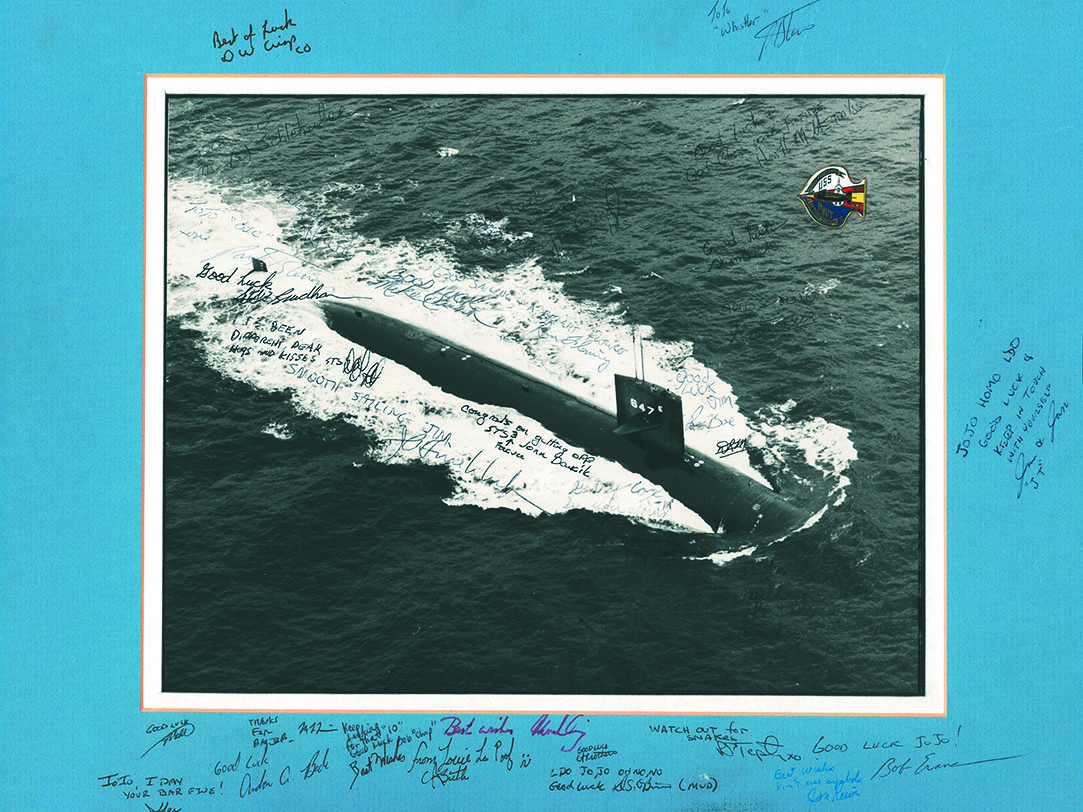Q&A with James Olson

LSU Stephenson Security Programs Institute Director
James Olson is the new executive director of the LSU Stephenson Security Programs
Institute. He served in the U.S. Navy for 25 years as a nuclear submarine officer,
flight meteorologist, geospatial and satellite resources collection manager, and science
and technology program manager.
Following his military career, he was the director of business development at Ball
Aerospace and a profit and loss director at Raytheon. He was also executive vice president
of Tempus Global Data, managing partner for Earth Observation Data, and most recently
served as the executive director of the Center for National Security Initiatives at
the University of Colorado Boulder.
What are some important aspects of the Stephenson Security Programs Institute, or
SPI, that you think the LSU community should know about?
The LSU Stephenson Security Programs Institute has a history dating back to 1991.
LSU’s Stephenson Foundation supported and advanced creation of the Stephenson Disaster
Management Institute, and over time, LSU combined three additional activities all
focused on coordination efforts in security research and training.
The purpose of the SPI is:
- To establish a coordinated, university-based system to promote interaction and collaboration
toward the objectives of security and safety;
- Coordinate the activities of existing units that focus on security and emergency preparedness;
- Create a collaborative structure to build partnerships between academic scholars and
the private sector; and
- Produce applied research and disseminate best practices to the business and practitioner
communities.
What originally drew you to SPI and to LSU?
Professionally, the opportunity to work with a mature organization focused on national
security needs was an important reason to pursue joining the LSU team. Personally,
I have grandchildren near Baton Rouge, making this an ideal family location.
The SPI was formerly known as the Stephenson National Center for Security Research
and Training, or SNCSRT. What was the reason for the name change, and what impact
do you hope it will have on the institute and its members?
As 2022 closed, SNCSRT continued to drive mission alignment with the future vision
of LSU’s Scholarship First Agenda to support the creation of a specialized zone at
LSU that uses collaboration and partnerships in security and cybersecurity program
operations. With that strategic intent in mind, SNCSRT decided to modernize its name
to LSU’s Security Programs Institute, or SPI.
LSU SPI’s strategic focus is on the future activities that advocate the vision of
the LSU Strategic Plan, realigning the organizational structure around three core
capabilities: research, training, and services.
What are the different organizations that make up SPI, and how do they all work together
to form a comprehensive, collaborative overview of security research and training?
Today, SPI comprises four organizations that are home to 120 full-time personnel,
325 subject matter experts, and over 110 students. These organizations are the Stephenson
Disaster Management Institute, National Center for Biomedical Research and Training/Academy
of Counter-Terrorist Education, National Center for Disaster Fraud, and Law Enforcement
Online.
The SPI team of organizations are all based in national security needs spanning research,
services, and training with a broad set of state and federal sponsors of their grants
and contracts.
For example, SPI organizations focus on cybersecurity research, disaster response
research, business resiliency development, active shooter training, homeland security
specialist training, law enforcement support, call center services, and more.
Our goal is to bring LSU’s strength and resources to advance applied research, enhance
cybersecurity and technology, and build opportunities for students in support of the
workforce demands in national security programs.
How has your career in the Navy and in your various roles in the national security
field helped to prepare you for this role at SPI?
Completing a 25-year career in the Navy taught me about the honor of service and contribution
to our nation’s national security. After my Navy career, I continued in the aerospace
community at both Ball Aerospace and Raytheon and focused on how to advance technology
capabilities in weather observation and in tactical military programs. At the University
of Colorado, I learned the importance of developing the next generation of leaders
and on the difficulties of advancing research from fundamental research to applied
research to impact the nation’s preparedness operations.
What are some of your goals—short-term and long-term—for SPI?
My short-term goals are designed around the continued advancement of the hard work
SPI is already doing. LSU and the SPI team have demonstrated great performance we
can leverage to continue our impact. I basically call this Business Development 101:
grow the customers you have.
My long-term goal is to establish SPI as a critical piece to the growth of an LSU
thematic zone of national security and applied research to meet industry and defense
needs. As we develop this, we are creating an opportunity for current students to
advance their workforce development experience and engage in groundbreaking research
associated with the national security research portfolio. We also want to identify
new sponsored research opportunities with the Department of Defense and other partners
and to collaborate with key LSU faculty and staff to prepare and execute strategic
goals.
What are you looking forward to most about joining the LSU and Baton Rouge community?
I’m excited about living in a community that enjoys working on hard problems but believes
in putting family first and enjoying life.





